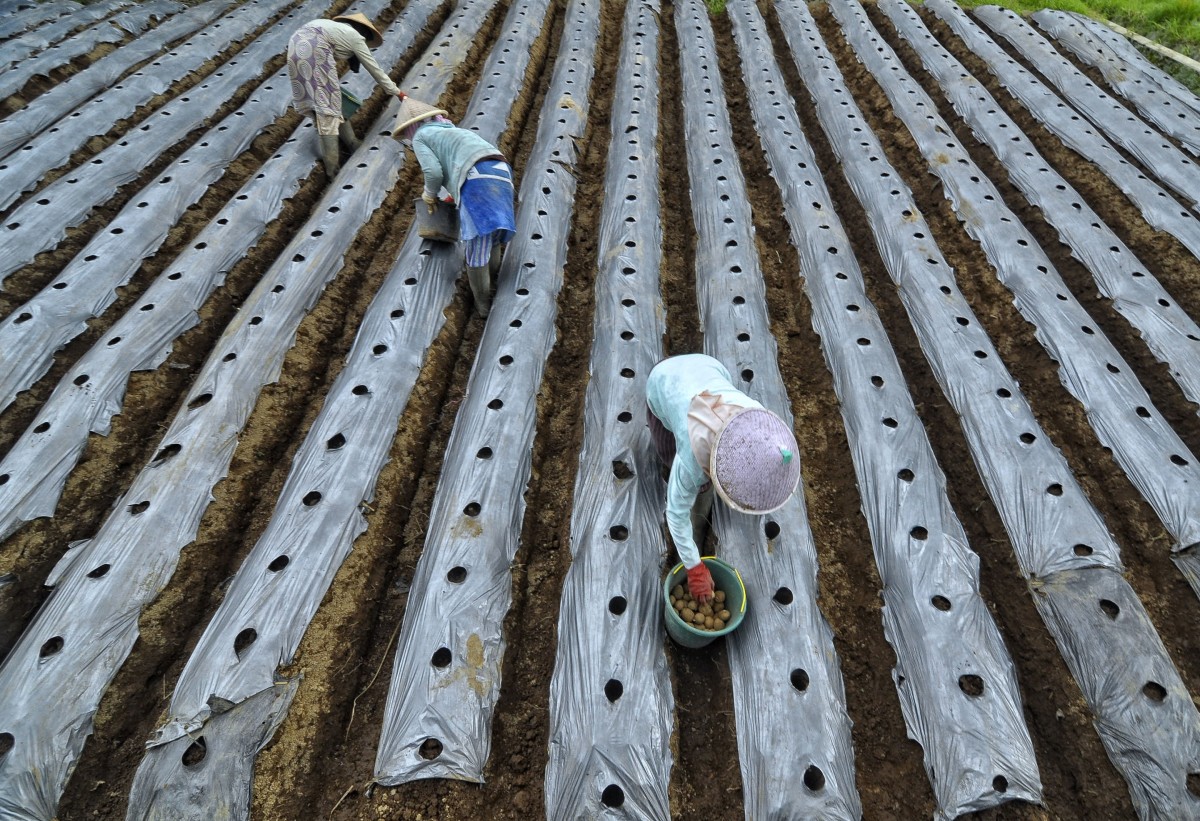Not all plastic needs to be bio-based or biodegradable

Per person, we throw away about 33 kilos of plastic packaging per year. This needs to change, according to Katja Loos, Professor of Polymer Chemistry. She recently organized the European Polymer Federation conference in Groningen, titled ‘Polymers for a Sustainable Future,’ with over 1,250 participants from 60 countries. We asked her how she sees the future of pastics, and what it will take to get there.
FSE Science Newsroom |Text Charlotte Vlek | Images Leoni von Ristok

You’re working on making plastics more sustainable. Should we imagine new kinds of bio-based plastics?
For us, it is important to consider the whole chain: where the raw material originates, how the plastic is produced and made into specific products, and what happens to the waste. So yes, among other things, we are working on bioplastics that do not use fossil raw materials. But we do much more than that: we look at the synthesis of plastics, how they are used to make products, and how they can be recycled.
So we need to consider more than the plastics alone?
Definitely! The problem lies in how we use plastic: we use way too much of it! At every step, we should ask ourselves: do I really need it, what am I using it for, and how can I collect and reuse it? For example, is it really necessary to package a peeled apple in plastic?
Bio-based does not automatically mean that a polymer is new or ‘green’
And how does your research contribute to that?
When we produce new plastics, we immediately consider their applications, what kind of waste they will generate, and whether and how they can be recycled or reused. We work, for instance, with furan-based polymers such as polyethylene furanoate (PEF), a sustainable replacement for PET. PEF is bio-based and has excellent properties. Our research is aimed at creating green synthetic routes for such materials. It is important to emphasize that bio-based does not automatically mean that a polymer is new or ‘green’. For example, Brazil produces large amounts of bio-based polyethylene from sugarcane, but it’s chemically identical to fossil-based polyethylene. Once it ends up in the environment, it stays for centuries, breaking down into microplastics.
And how do you make the process more sustainable?
To make plastic, you need to turn monomers (the raw material) into long chains of polymers. This often requires catalysts that may be toxic, as well as high temperatures. We develop processes using enzymes that can polymerize at lower temperatures, with the enzymes acting as green, environmentally friendly catalysts. But we go further than synthesis: we also look at how to make the processing of materials more energy-efficient, for example by using injection moulding and 3D printing. And we consider from the outset what will happen at the end of the material's life cycle.
Making plastics from malic acid using lasers
You can also make plastics by treating raw materials with light, a process known as photopolymerization. This works well in 3D printing: you begin with a container of liquid, and the areas hit by the light beam, typically a laser, solidify. Loos: ‘Within our hybrid research group with NHL Stenden, we work closely together on these kinds of innovative techniques. NHL Stenden has strong expertise in photopolymerization and 3D printing, and we combine this with our knowledge of sustainable polymers. For example, rather than relying on traditional fossil acrylates, we developed an acrylate derived from malic acid. It was quite uncertain whether this new monomer would cure under laser light, but fortunately it worked well and the prints had good properties.’
You work closely with industry. Do you see much interest there in sustainability?
Yes, industry is willing! And we don’t develop polymers just to publish in Nature. What we discover may not go directly into production, but it shouldn’t end up in a file drawer either.
But does it end up in a file drawer more often than you’d like?
Yes, unfortunately it does. For industry, it is sometimes still challenging to find a market, as the new techniques are often more costly than the established ones that have been optimized for decades. For example, we created PEF with flame-retardant properties in collaboration with a company. And we were able to achieve excellent properties! But it was ultimately too costly for the company to produce, and this is where it stops for the moment. But the knowledge remains, and it could still lead to success in the future.

The case of the carbonated plastic bottle
A plastic bottle for carbonated drinks currently has a thin layer of aluminium on the inside to keep the carbon dioxide from coming out. You don’t see it, but it makes the bottle much harder to recycle. At the same time, there are fairly sustainable materials that can keep the carbonation in the bottle. But it makes the price per bottle a few cents higher, and the consumer pays the difference.
Plastic pollution is costing us a lot of money today, along with health problems from microplastics and natural disasters, according to Loos. 'I believe subsidies for the more expensive bottles, or a prohibition on aluminium layers, are necessary. In the long run, that would actually save us money,’ Loos says.
The case of agricultural plastic
Today, agricultural plastic is often made from polyolefins, the most widely produced plastic in the world. Farmers use it, for example, to cover crops. They reuse the same sheet of plastic for several years, but in the end the film tears and releases microplastics into the soil. Loos: ‘I can understand it, of course: you can’t spend the whole day picking up bits of plastic. But there are perfectly fine biodegradable plastics. You could very well use them to produce agricultural plastics that biodegrade at the end of the season. You can make excellent films from that, and this is something we are also researching in our hybrid research group with NHL Stenden.’
Most of the plastics we use do not need to be biodegradable. Preferably not, actually
Do you find it realistic that one day all plastics could be bio-based and biodegradable?
No, and that is not necessary at all, as long as the system is circular. You can easily reuse or recycle plastics, and if the cycle is closed properly, it makes no real difference whether the carbon in plastics originates from fossil or bio-based sources. And most of the plastics we use do not also need to be biodegradable. In fact, preferably not, because otherwise people might think they can just throw their empty bottles or other rubbish into nature. But of course, that’s not the way it works.
See also: Green plastics: the solutions are here
More news
-
02 December 2025
Student Menna Zahran wins Unilever Research Prize
-
27 November 2025
Aeroplane spotting using a radio telescope
-
26 November 2025
Why are shiny colours rare yet widespread in nature?
